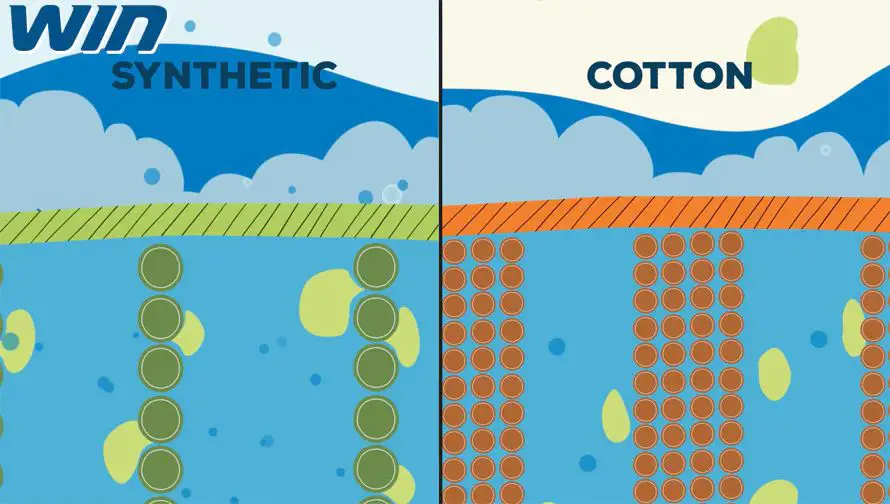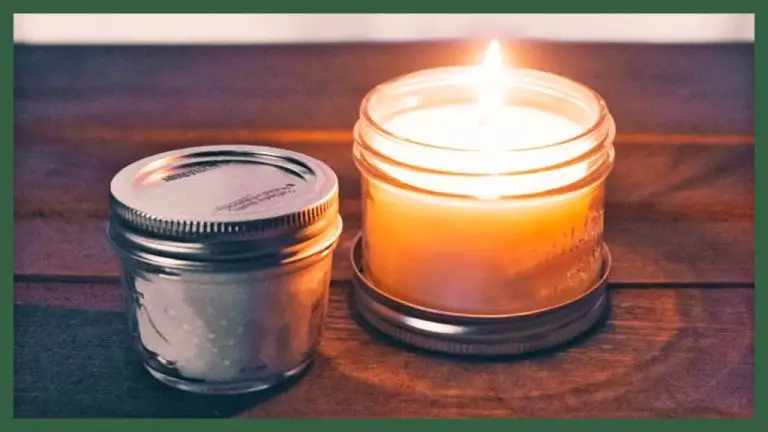What Does Wick Up Mean?
Wicking fabrics are designed to pull moisture away from the skin to the surface of the fabric where it can evaporate quickly. The technical term for this process is “capillary action” but it’s more commonly referred to as “wicking.”
When we sweat, moisture gets trapped between our skin and clothing. This can lead to discomfort and chafing as the wet fabric rubs against skin. Wicking fabrics use capillary action to transport moisture from the skin-fabric interface to the surface of the garment. This helps sweat evaporate instead of pooling against the skin. The result is drier, more comfortable clothing.
How Wicking Fabrics Work
Wicking fabrics are engineered at the fiber level to actively move moisture away from the skin. The way the fabric is constructed creates channels that provide a pathway for moisture to spread across the surface of the garment and evaporate quickly (1). The moisture travels along the fabric yarns due to capillary action, allowing the moisture to disperse rather than pool against the skin (2). The yarns and fibers that make up wicking fabrics are hydrophobic, meaning they repel water. This causes the moisture to be pushed away from the body along the fabric’s surface (1). The main goal of wicking fabric construction is to create fast-drying performance clothing that keeps the wearer’s skin dry and comfortable.
(1) https://www.eysan.com.tw/what-is-wicking-fabric-how-does-it-work/
(2) https://texsuppliers.com/what-is-wicking-fabric-everything-you-must-know
Where Wicking Occurs

Wicking occurs when liquid moves through fabric by capillary action. This process relies on the micro-scale structure of certain fabrics that have pores or channels that draw moisture away from the skin and towards the surface of the fabric where it can evaporate. As the American Chemical Society explains, “Moisture can freely travel through these pores to the outer surface, where almost like magic, it is whisked away” (Source). The key is using fabrics engineered with very fine fibers and a loose weave or knit structure to create pathways for moisture transport.
Why Wicking is Useful
Wicking fabrics help move moisture away from the skin, which provides several benefits:
- Keeps you dry and comfortable – By wicking moisture away from the skin, wicking fabrics prevent that “damp” feeling you can get from sweaty clothes sticking to your skin. This helps regulate body temperature and avoids chafing.
- Prevents odor – Sweat itself is odorless, but bacteria on your skin thrive in a moist environment. Wicking fabrics reduce bacterial growth by keeping moisture away from your skin.
- Quick drying – Unlike cotton, moisture wicking fabrics are designed to quickly disperse moisture. This allows the fabric to dry faster after sweating or getting wet.
- Temperature regulation – As sweat evaporates from wicking workout clothes, it pulls heat away from your skin so you stay cooler. This is key for high intensity exercise.
By keeping you drier and moving moisture away from the skin, wicking fabrics provide comfort and enable peak athletic performance.[1]
Types of Fabrics that Wick
There are several types of synthetic fabrics commonly used for moisture wicking properties. The most popular options include:
Polyester is one of the most widely used fabrics for wicking. According to Blissy, polyester has excellent wicking abilities because it is hydrophobic, meaning it repels water. The structure of polyester fabric creates capillary action that pulls moisture away from the skin.
Nylon is another synthetic fabric praised for its moisture wicking capabilities. Run Society notes that nylon is highly effective at wicking because it dries quickly and doesn’t absorb moisture. The smooth surface of nylon allows moisture to glide away from the body.
Spandex is often blended with polyester or nylon to create stretchy, form-fitting moisture wicking fabrics. Even in small amounts, spandex adds flexibility and helps the fabric cling closer to the body for better wicking performance.
Advantages of Wicking
Wicking fabrics provide many advantages compared to traditional absorbent fabrics like cotton. The main benefits of wicking fabrics are that they keep skin dry and prevent chafing. When sweat is wicked away from the skin into the fabric, the fabric helps moisture evaporate instead of absorbing it. This keeps the skin dry rather than allowing sweat to accumulate (Wazoodle). Dry skin is less likely to chafe than wet skin. Chafing results from the friction of skin rubbing against clothing, which is more likely to occur when sweat makes fabric cling to the skin. Wicking fabrics reduce this friction by remaining relatively dry next to the skin.
Disadvantages of Wicking
While wicking fabrics have many benefits for activewear, they also come with some downsides to consider. One potential issue is that wicking fabrics can spread odors and breed bacteria if not washed properly (https://expressknitinc.com/blogs/articles/what-is-wicking-fabric-everything-you-need-to-know). The synthetic materials used in these fabrics tend to hold on to odors more than natural fibers like cotton. As sweat gets wicked away from the skin, it moves into the fabric where bacteria can feed on it, causing unpleasant smells. Wicking fabrics need to be washed frequently, especially after intense workouts, to prevent odor issues.
Some people also find wicking fabrics to be less comfortable than natural materials directly against the skin for long periods. The smooth synthetic fibers may cause chafing for some wearers. Using a base layer under wicking activewear can help. Overall, wicking fabrics have revolutionized athletic apparel by keeping sweat away from the body. But they require extra care and may not work for everyone in all situations.
Wicking vs Absorbent Fabrics
Wicking and absorbent fabrics manage moisture differently. Wicking fabrics move moisture away from the skin to the surface of the fabric so it can evaporate. The specialized fibers in wicking fabrics pull the moisture along the length of the fibers and spread it across a larger surface area for quicker drying. This keeps you feeling drier compared to absorbent fabrics.
Absorbent fabrics like cotton soak up perspiration into the fibers but hold the moisture close to your skin. The moisture gets trapped within the fabric instead of spreading out. This leads to a wet, heavy feeling against the skin. Absorbent fabrics take longer to dry out than wicking fabrics.

According to Gentleman’s Gazette, “There’s some debate over wicking vs. absorbent fabrics in terms of which is best when it’s hot. What I’ve seen in researching is that an absorbent cotton undershirt paired with a thin wool suit is a good combination for staying cool and dry.”
So while absorbent fabrics have their place, wicking fabrics offer superior moisture management through active evaporation and quicker drying times.
Source: https://www.gentlemansgazette.com/ways-to-stay-cool-menswear/
Examples of Wicking Apparel
Wicking fabrics are commonly used in athletic and performance apparel where moisture management is important. Here are some examples of clothing that utilizes wicking material:
-
Sports jerseys – Basketball, football, soccer, and other sports jerseys are often made with polyester or other synthetic fibers that wick moisture away from the skin.
-
Workout shirts – Brands like Under Armour, Nike, Adidas, and more use proprietary wicking fabrics in their workout shirts to keep athletes cool and dry.
-
Yoga pants – Wicking yoga pants help prevent sweat buildup during yoga sessions and other workouts.
-
Hiking socks – Wicking socks keep feet dry and blister-free during long hikes by moving moisture away from the foot.
-
Cycling jerseys – Tight fitting cycling jerseys are made of wicking materials that prevent sweaty backs during long rides.
-
Base layers – Wicking base layer tops and bottoms help regulate body temperature during cold weather sports.
The breathability and moisture wicking properties of these high-performance fabrics make them well-suited for athletic apparel.
Conclusion

To summarize, wicking refers to the ability of certain fabrics to pull moisture away from the skin and spread it out across the surface to promote evaporation. This is achieved through the use of synthetic fibers that are hydrophobic, meaning they repel water rather than absorb it. Wicking fabrics keep the skin dry by transporting perspiration away from the body. This is useful for athletic apparel, outdoor gear, and hot weather clothing. The main advantage of wicking is moisture management, which provides comfort and temperature regulation. However, wicking fabrics may require more frequent washing as odors can build up on the material rather than being absorbed. By learning about the performance properties of technical fabrics, consumers can select apparel better suited for their intended activity or environment.





